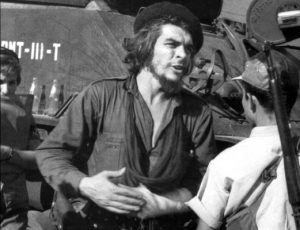
 Cubanet, Tania Diaz Castro, Havana, 3 January 2017 — In the Cuban national press there are many stories of the Castro dictatorship that are very rarely told. Unfortunately the official journalists do not investigate before they write and repeat like parrots the official script.
Cubanet, Tania Diaz Castro, Havana, 3 January 2017 — In the Cuban national press there are many stories of the Castro dictatorship that are very rarely told. Unfortunately the official journalists do not investigate before they write and repeat like parrots the official script.
One of these stories is about the armored train of Santa Clara and what happened between the last two days of 1958 and January 1, 1959. Despite being wrapped in a blanket of badly connected lies, the story is still used by the national press, and by the government’s own version of a Cuban wikipedia, Ecured, for the chronologies of the regime, and it supported above all by the Cuban History Institute.
Just a few days ago, Nelson Garcia Santos, correspondent for the newspaper Juventud Rebelde (Rebel Youth), wrote an article about the battle of Santa Clara and the armored train, highlighting the version of Luis Alfonso Zayas, today a general. Zayas said, “The guards, holed up on Capiro Hill, opened fire. The crew of the armored train, when they saw things going badly, retired to the box cars. There, they were personally liquidated by the forces of Ramon Pardo Guerra.”
The general’s false testimony is as false as were Fidel Castro’s statements, when he described it as a “… bold attack by Che on the city of Santa Clara, with 300 fighters, when they faced an armored train on the outskirts of the city, they intervened on the path between the train and the main headquarters, derailed it, took the train, made everyone surrender and seized all the arms.”
In reality, the armored train did not carry shock troops, but rather dozens of engineers who were intending to repair the bridges and roads destroyed by the rebels. Derailing it was certainly part of the plan for a skirmish, but by the time the train arrived on Capiro Hill it had been sold to Che Guevara by Batista’s military forces, in the person of Colonel Florentino Rosell, for 350 thousand dollars.
Initially, the buyer was to be Commander Eloy Gutierrez Menoyo, as it appears in his Memoirs and, being a great friend of mine, he told me this before he died, but Che, cunningly, got ahead of him.
Also in the memoirs of Fulgencio Batista, printed in Miami in 1960, under the title of Response, he says that: “… the armored train had not been ambushed by Che, but delivered and sold by Rosell, who with the money from the sale, about 350 thousand dollars, fled to Miami in the first days of January of 1959.”
And finally, there is a letter from Che Guevara, written on the same date to Enrique Oltuski Ozacki, the top leader of Las Villas, which has never been reprinted in Cuba, whose contents also explains this story because, in it, Che reproached combatant Oltuski, who refused to rob a bank to obtain the money he needed.
The purchase of the armored train was so hidden by the leadership of the new regime that even impartial historians of those years barely mentioned it, although without noting that since mid-1958, Batista’s troops were tired of the war, corrupted and in the process of negotiating with Fidel Castro.
